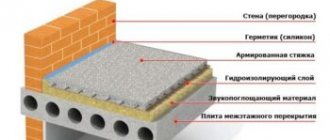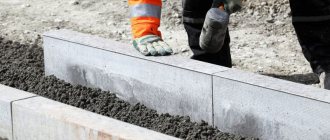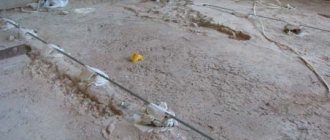A smooth surface of a highway is a guarantee of safety and comfortable movement not only for drivers of all types of transport, but also for pedestrians. An asphalt road has a limited service life. This piece of land is constantly subject to stress, and the surface is adversely affected by weather and climatic factors.
Due to the rapid development of technology, the number of ground transport has also increased. Even the best quality road surfaces deteriorate over time due to overloads. In addition, many insufficiently qualified or simply unscrupulous company employees violate the pothole repair technology . Many of them are trying to save on materials. Therefore, roads have to be repaired quite often. A fairly common mistake when laying asphalt is insufficient compaction of the road material. The consequence of this defect is peeling, deformation, cracks, deep holes and other damage. There are standards that directly relate to the conditions under which patching repairs are carried out (GOST R 50597-93).”
Pothole repair
Pothole repair of asphalt pavement
Today, many different methods of “treating” asphalt highways have been developed. Pothole repair of asphalt pavement seems to be the most acceptable due to its cost-effectiveness. Such repairs take little time and do not require large expenses. Qualified specialists will be able to carry out such repairs efficiently and in the shortest possible time, and they can guarantee an excellent result. Preparing the damaged area for restoration must necessarily be conducive to high-quality work, ensuring compliance with all points of the mandatory conditions for pothole repair GOST R 50597-93, increasing the service life of the road to at least 3 years.
It is very important to carry out pothole repairs of asphalt pavement . Statistics show that every year 2-3% of the total road area needs repairs. If the damage is not repaired, the entire road will have to be repaired.
Technology
Climatic conditions dictate their own rules for road repair in different parts of the world. The technology of pothole repair in the Russian Federation is highly dependent on the time of year. The procedure is usually performed at a stable temperature above +4 °C. It is best not to neglect this rule. If there is high humidity outside, you cannot carry out patching repairs ( SNiP 3.06.03-85)
The pothole repair technology involves filling cracks and potholes on the asphalt with a special bitumen mass. This type of repair is acceptable if the damage to the pavement does not exceed 15% of the total area of the road.
The preparatory stage includes:
- Marking (you need to mark the damaged area by capturing a certain amount of the entire road surface);
Pothole repair preparation for repair with a jackhammer
- Dismantling the damaged layer of asphalt pavement (this is done using a jackhammer, you can use cold milling to create the most even walls);
- Removal of household and construction waste.
Pothole repair of the road, cleaning of the repaired area
Only after completing the listed preparatory steps is it possible to begin direct treatment of the pits with a bitumen composition. Although at first glance it may seem that pothole repair technology is a simple task, it is not so. Work such as patching asphalt pavement should be carried out exclusively by specialists. The company must use only first-class raw materials, the most advanced technologies, conscientiously treat its immediate responsibilities, and know the rules by which pothole repairs are carried out ( SNiP).
Prevention and repair of concrete road surfaces
The article describes the types of damage to concrete pavement of highways, as well as the causes and prevention of damage.
Repair of minor, major damage, and repair of significant faults and subsidence of road sections.
Types and causes of damage
It is no secret that concrete roads in Russia last much less than in Europe, Korea, China or the USA. The reason is not only incorrect road construction technologies and low-quality materials. One of the reasons is that our concrete roads do not have the same careful maintenance that is provided abroad. Therefore, minor damage that appears develops into destruction of the coating and failure of the road.
Concrete is a very hard material. When heated or cooled, its geometric dimensions change, which causes thermal stresses.
If the size of the covering slab is too large, or the expansion joints are clogged with stones, thermal stresses begin to destroy the surface. Water gets into the small cracks that appear, and when temperatures drop, it destroys the concrete. If waterproof concrete was not used during construction, then water begins to destroy it even at positive temperatures. The hardness of concrete decreases, wear increases.
Properly compacted and prepared soil and a properly made base have no less influence on the condition of the coating.
In half of the cases, damage to concrete pavement occurs due to lack of maintenance.
Prevention
Emulsion processing
If a concrete driveway is undamaged, its service life can be greatly extended with inexpensive maintenance. The concrete coating is treated with various liquids, which form a thin polymer film on the surface of the concrete. This film is wear-resistant and protects concrete from water, but seriously reduces roughness, and therefore traction with car wheels. The most popular liquids are based on bitumen and polyurethane.
Annual preventive treatment can extend the service life of the road by two to three times.
Annual preventive treatment of concrete pavement of highways allows you to extend the service life of the pavement.
Laying the wear layer
Another method of prevention is to install a wear layer. This work is much more expensive than prevention with liquids and is more effective. The wear layer not only protects the coating from contact with the tires, but also does not reduce traction with the wheels of cars, so it is preferable on highways, descents, ascents and turns. For the wear layer, cast or hot asphalt concrete is used. The cost of laying cast asphalt concrete is slightly higher, but it is not afraid of water, temperature changes, and provides high-quality waterproofing of concrete. Repairing a cast wear layer is very simple and inexpensive.
Coating repair
Repair of small (less than half the coating thickness) cracks
Small cracks, less than half a layer deep, are sealed with various mastics and putties. The crack is inspected to ensure that the edges have not become loose. All loose concrete must be cut out with a jackhammer, or cut with a milling cutter, disk or soil cutter. After which the crack is cleaned of dirt with iron brushes, blown with compressed air and treated with various adhesion-increasing liquids. Most often these are aqueous polymer emulsions. Small cracks can be sealed with bitumen. The technology is the same as with polymers, and the cost is noticeably lower. After repairing small cracks, the concrete must be covered with a wear layer.
If you do not cover the repaired area with a wear layer, the patch will fall out within a few months.
Repair of deep (more than half the coating thickness) cracks
It is necessary to cut out the damaged concrete, stepping back from the crack by 15-20 cm in each direction, in order to check the integrity of the reinforced concrete layer (RCC) under the concrete covering. If the reinforced concrete structure does not show signs of damage, it is necessary to make several cuts 18-20 mm wide across the cut area, capturing at least 20 cm of undamaged concrete. Reinforcement with a diameter of 14-16 mm fits into these slots. After which the damaged area and cuts are filled with new concrete.
When repairing deep cracks, it is necessary to cut out the damaged concrete, stepping back from the crack by 15-20 cm in each direction.
Repair of cracks and pavement subsidence
If the damage affected not only the coating, but also the base, it is necessary to remove the entire covering slab, cut out the base, and conduct a soil inspection. Most often, such cracks occur as a result of soil subsidence caused by leaching, poor compaction, or voids.
Having eliminated the cause of the soil subsidence and laid the sand cushion and crushed stone in place, it is necessary to connect the new reinforcement to the old one. Large anchors can be used for this. Holes for anchor bolts are drilled in the old base, the bolts are inserted, driven or tightened, and new reinforcement is attached to them. After this, the concrete base is poured, and a week later a new covering slab is poured.
Pothole repair of asphalt concrete pavement
Kinds
The main types of patching repairs are carried out using the following materials and technologies:
- hot mix asphalt concrete;
- cold asphalt concrete mixture;
- using cast asphalt concrete;
- infrared asphalt repair;
- cold jet injection technology.
Preparation of asphalt concrete mixture
Mixtures for eliminating defects in asphalt concrete must be designed in accordance with established standards depending on the type, type and purpose of the coating on which the patching takes place ( GOST 9128-84). The use of modern construction machines significantly improves the quality of asphalt concrete. The mass is prepared in special installations that are equipped with continuous or batch forced mixing mixers (SNiP 3.06.03-85, clause 10.3).
Bitumen is used only when hot. The heated mixture is suitable for use within 5 hours. It should be mixed until smooth. Mineral materials suspended in fractions should be introduced into the mixer one by one and mixed with each other, and only then the bitumen. The duration of mixing of asphalt concrete mixtures of all types is established in accordance with the technical data of the mixing plant.
Technology
According to SNiP, clause 10.16, road surface repairs can only begin in dry weather. It is recommended to use hot and cold mixtures at temperatures from 5 °C, in autumn - from 10 °C; warm mixtures - above 10 °C.
Spot repairs of roads using hot asphalt concrete mixtures at temperatures above 0 °C can only be carried out if the following conditions are met:
- layer thickness 4+ cm;
- adding surfactants or activated minerals.
Urgent pothole repair of asphalt concrete pavement is simplified if you preheat the entire road surface. For this purpose, special equipment is used - a self-propelled asphalt heater, which can heat the coating up to 200 °C. This machine is also used to dry damaged areas of the road after rain.
Only after warming up can patching repairs of asphalt concrete pavement . It is carefully loosened with a rake to the depth of the hole, then a new asphalt concrete mixture is added to the damaged area using a thermos hopper (since the mixture must also be hot). The new and old mixtures are mixed well, after which they are evenly distributed and compacted with a special vibrating roller from the edges to the middle of the damaged area ( pothole repair, SNiP 3.06.03-85, clause 1.12). It is the use of modern technology that provides high quality work, not to mention how much it simplifies pothole repair. GOST 31015-2002 recommends the use of hot mixtures to “treat” the highway.
Do-it-yourself asphalt laying
In private construction, using asphalt, they make blind areas, arrange paths and sidewalks. In addition, asphalt can be used to form roofing and carry out yard work.
When laying paths yourself, the work is done in stages:
- Initially, up to 30 cm of soil is removed and all debris is removed;
- Next, curbs are installed, which will not only serve as an additional decoration, but will also prevent the bitumen from spreading;
- At this stage, a pillow is created. The crushed stone layer should reach 15 cm, after rolling which you can pour a finer fraction of crushed stone and roll it again. The last layer will be sand. 5 cm will be enough. After creating such a pillow, you will need to fill it with water and roll it with a hand roller;
- Hot asphalt must be spread evenly around the entire perimeter of the path. Next, to level out the bumps, you need to use a motor mop, gradually filling all the holes with new portions of asphalt. Since the material hardens quite quickly, several workers are needed to carry out all the work;
- When the road section is filled with asphalt and leveled, it is necessary to compact it with a hand roller. You will first need to lubricate the roller with diesel fuel to prevent sticking and ensure uniform coverage. It is important to cover all the tools used to perform the work with diesel fuel.
The temperature of the asphalt during laying is very important. It should not fall below 120C, otherwise the coating will soon become completely unusable.
When laying, it is important to make only direct movements; reverse movements are strictly prohibited. Bitumen consumption in this case is calculated individually and can be either 5 or 10 kg. At the end of the work, instead of impregnation, you can use special paint for asphalt. It will give the necessary shade. In addition, you can use white paint to mark asphalt.
The video will tell you how to properly lay (lay) asphalt with your own hands:
Injection pothole repair
There are simpler methods for repairing the route. One of them is injection patching . Recently, this method has become most widespread. To carry it out, special machines such as “Rasco”, “Savalco”, “Blow Petcher”, “Dura Petcher”, etc. are used. Similar machines in Russia are produced in the form of trailed equipment, which is called a “sealer” (brands UDN-1, BCM-24).
Direct injection patch repair is performed using a cationic emulsion. The pothole is cleaned using suction or a jet of compressed air. The pit is primed with heated emulsion (60 °C), after which it is filled with black crushed stone. There is no need to process edges with this repair method.
Road restoration in winter
Innovative technologies make it possible to carry out pothole repairs even during winter frosts. Frozen asphalt can be repaired using pre-prepared mixtures that are stored in airtight packaging. The repair process is very similar to working with conventional hot asphalt concrete.
There are several types of cold asphalt concrete mixture:
- emulsion mixture for immediate use;
- cold emulsion-mineral asphalt concrete mixtures;
- cold stored (packaged) organomineral mixture and other types of mixtures.
Cold asphalt concrete mixtures are based on asphalt made using specially seasoned technology using modified additives or modified bitumen (bitumen makes up from 4.2 to 4.5% of the weight of crushed stone, and additives - from 15 to 25% of the weight of bitumen). This composition gives asphalt properties that were previously beyond the capabilities of road construction.
The use of stored cold organic mineral mixtures makes it possible to carry out pothole repairs at air temperatures down to -10 °C.








